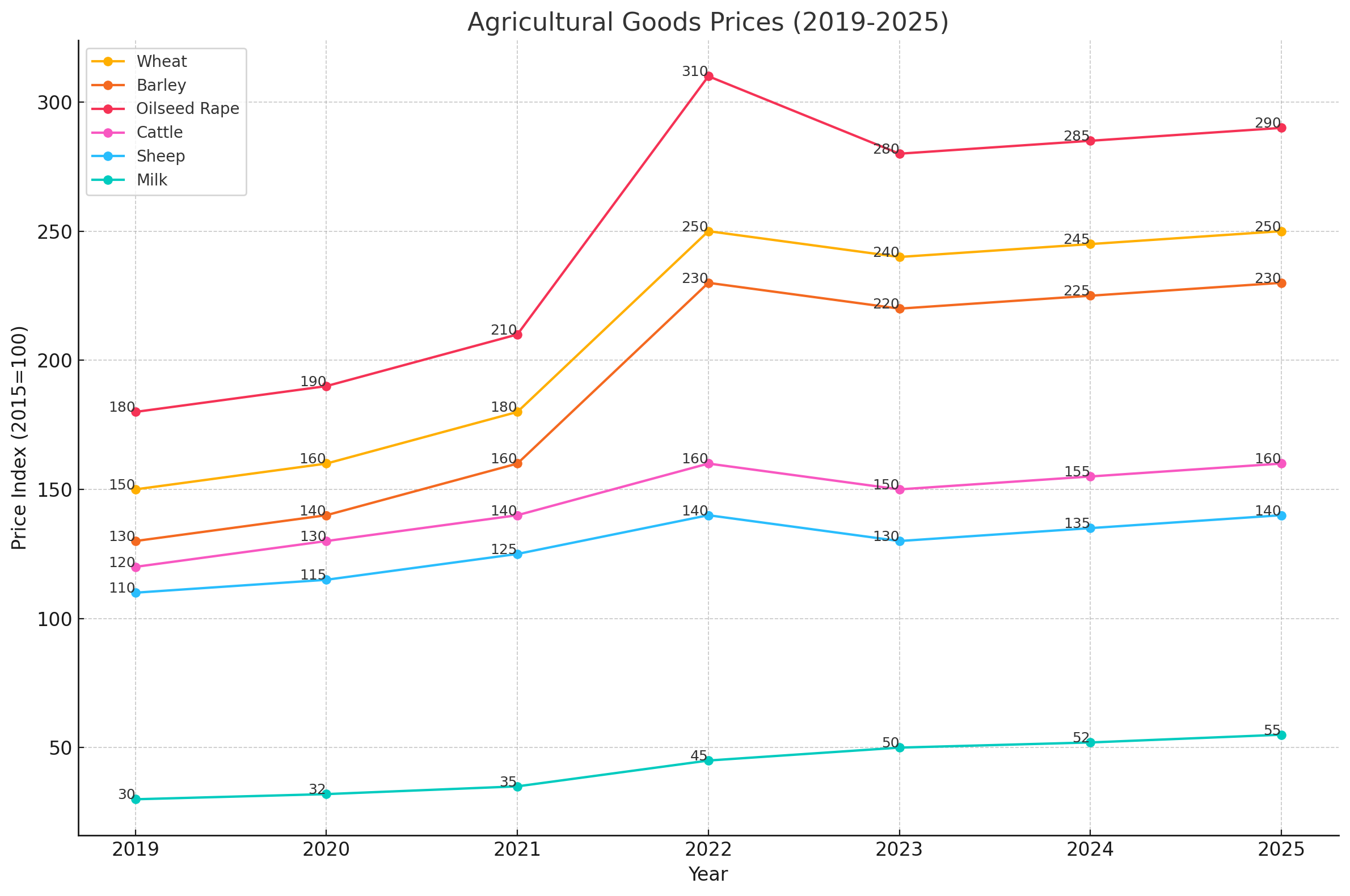UK Agricultural Goods Prices: Trends and Predictions
Historical Data (2019-2023)
The agricultural goods prices in the UK have shown significant fluctuations over the past five years due to various factors such as weather conditions, global market dynamics, and local economic policies. Here’s a summary of the trends:
-
Cereal Prices:
- Cereal prices, particularly for wheat and barley, have experienced notable increases. In 2022, the price of cereals surged due to reduced exports from Ukraine amid the conflict with Russia. Wheat prices, for instance, reached a peak in June 2022 but saw a decline towards the end of the year (GOV.UK) (GOV.UK).
-
Oilseed Rape:
- The price of oilseed rape increased significantly in the first half of 2022, driven by global supply issues and reduced exports from Ukraine. This peak was followed by a steady decline (GOV.UK).
-
Livestock Prices:
- Prices for cattle and calves saw steady increases throughout 2021 and 2022, primarily due to rising feed costs. Sheep and lamb prices, however, showed fluctuations with peaks in spring and declines towards the end of the year due to reduced consumer demand (GOV.UK).
-
Milk and Dairy Products:
- Milk prices remained relatively stable until late 2021, after which they increased significantly due to higher feed costs and increased demand (GOV.UK).
-
Input Costs:
- The costs for agricultural inputs such as fertilizers and energy have seen dramatic increases. Fertilizer prices, for example, more than doubled from 2021 to 2022, driven by high natural gas prices and reduced domestic production (GOV.UK) (Office for National Statistics).
Prediction for the Next Year (2024-2025)
Based on the historical data and current market conditions, the following predictions can be made for agricultural goods prices in the UK:
-
Cereal Prices:
- Cereal prices are expected to stabilize but remain at relatively high levels due to ongoing global supply chain issues and potential climate impacts on crop yields.
-
Oilseed Rape:
- Prices may continue to fluctuate with potential increases during planting and harvest seasons, depending on global market conditions and export capabilities.
-
Livestock Prices:
- Prices for cattle and sheep are likely to see moderate increases, driven by ongoing high feed costs and potentially increasing demand as economic conditions improve.
-
Milk and Dairy Products:
- Milk prices are expected to remain high but stable, with potential for slight increases depending on feed costs and consumer demand trends.
-
Input Costs:
- Costs for fertilizers and energy are expected to remain high, with potential further increases if global energy prices rise. However, any significant improvements in supply chains or production capabilities could help stabilize these costs.
Overall, while some stabilization is expected, the agricultural sector in the UK will likely continue to face challenges related to input costs and market dynamics. Adaptation and strategic planning will be crucial for farmers to navigate these fluctuations effectively.
For more detailed information, you can refer to the sources provided by the GOV.UK Agricultural Price Indices and the Office for National Statistics.
